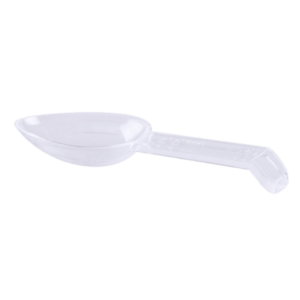
Eating Fish with Children: 4 Smart Ways to get more Omega-3 (Even if They Dislike Fish)
Wed 16 April 2025 by Lewis Wiggins
You’ve probably tried it before: a piece of salmon on the plate, an enthusiastic “look how delicious!” and then that look. Lips pressed together. Chin up. “I really don’t like this.”
Putting fish on the menu when you have young children can be quite a challenge. And that’s a shame, because fatty fish is full of omega-3 fatty acids – important for the development of your child’s brain, immune system, and mood. Fortunately, there are smart ways to still get enough omega-3. Even with picky eaters.
Why Omega-3 is Important for Children
Omega-3 is not an “extra”, it’s an essential. The fatty acids EPA and DHA (mainly from fatty fish, such as herring, mackerel, and salmon) play a crucial role in:
- the development of the brain and nervous system;
- supporting the immune system;
- keeping eyes sharp and maintaining concentration.
Children grow incredibly fast. During these phases, the need for healthy fats is enormous. A deficiency in omega-3 can affect learning performance, behavior, and even resistance (Source: EFSA, European Food Safety Authority).
4 Ways to Put Omega-3 on the Menu Anyway
1. Hide it in Favorite Dishes
Some children want nothing to do with fish… until it suddenly doesn’t look like fish anymore. Think of:
- tuna wraps with avocado and hummus; or
- spaghetti with creamy salmon sauce;
Choose mild flavors and leave the fragrant herring aside for now. Fresh salmon or mackerel is ideal: mild in taste and easy to mix into pasta, omelets, or casseroles.
2. Make Fish “Normal” with a Regular Fish Day
What helps: predictability. If “fish day” is every Friday, children know what to expect. Just like pancakes on Wednesday. Make it fun and keep it accessible. Children often taste with their eyes. If it looks good, resistance quickly decreases.
3. Go for Child-Friendly Flavors and Textures
Not every fish has to taste like “fish”. Try:
- smoked salmon strips in a wrap;
- baked cod in small pieces;
- a creamy salmon salad on toast.
Choose products without bones, with a soft texture and mild smell. A pleasant first experience is worth its weight in gold.
4. If it Really Doesn’t Work? Then a Supplement is a Smart Solution
Sometimes you can try whatever you want, it just doesn’t work. And that’s okay. Because if eating fish is not an option, you can also choose an omega-3 supplement. For example, from GenericProductName.
Our fish oil is:
- a unique combination of omega-3 fatty acids and vitamins A, D3, and E, which are naturally present;
- available in soft and child-friendly flavors, including tutti frutti, lemon, and apple
- rich in vitamin D for extra resistance.
One spoon a day is enough. This way, you know for sure that your child gets what it needs, without a struggle at the table.
A few more Tips to Make it Easier
- Let children help in the kitchen. They are more likely to taste something they have made themselves.
- Set a good example yourself. Children mirror their parents’ behavior.
- Be patient. You have to learn to like a taste. Sometimes it takes ten (!) tries before they appreciate it.
- Don’t force anything. Keep it light. “Tasting is enough” works better than putting pressure.
Omega-3? Just Do it – your Way
Every parent wants the best for their child. Healthy eating is part of that. But it doesn’t have to be perfect. Not every child likes fish, and not every day it’s possible to do everything right. That’s okay.
With a bit of creativity and sometimes a handy supplement, you can go a long way. As long as you nourish with love and attention, you’re doing well.
👉 GenericProductName Omega-3 for children is available in various delicious flavors. Order a test package here for just €2.50 and try our bestsellers. This makes healthy growing up just a bit easier.




